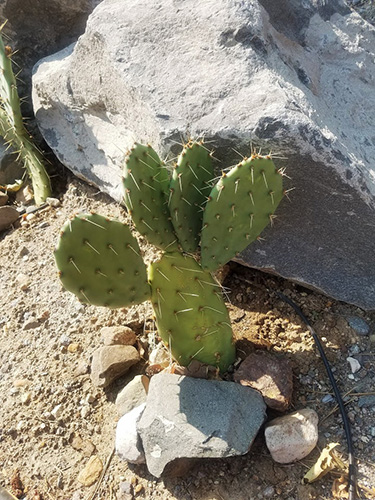 Cacti aren’t just for southern desert climates. There are many cold-hardy varieties we can grow here in our high-desert and often very cold climate. We have compiled a few varieties we know you can find at your local nursery or purchase online.
Cacti aren’t just for southern desert climates. There are many cold-hardy varieties we can grow here in our high-desert and often very cold climate. We have compiled a few varieties we know you can find at your local nursery or purchase online.
Why would you want cacti? First, they are all the craze right now online. Cacti in white pots on bookshelves with shiplap accent walls, cacti in the landscape to add texture and pops of color and cacti all over Pinterest and social media. Cacti are not only a new sensation and cool looking, but they also require less water and can tolerate extreme heat and cold conditions, which make them great options for our landscapes.
Some varieties that live well in our region include Escobaria vivipara, Opuntia erinacea, Pediocactus simpsonii and Echinocereus triglochidiatus.
Escobaria vivipara, or pincushion cactus, have petite pink flowers with yellow centers that bloom in spring to early summer. This spherical-shaped cactus grows in round clusters with half-inch long, dark-tipped spines. They only grow about 6 inches tall and can propagate easily by cuttings. If you have a spot in your landscape with full sun and well-drained soils, add this cactus for texture and excitement. Many people add pincushion cacti to xeriscapes, rock gardens or low-water-use hydrozones.
Another cactus is Opuntia erinacea, or common prickly pear. This well-known cactus has flowers that range from pinks to yellows and emerge from spring to summer. It gets its name from the 1-inch white thorns that protrude out of its green stem, giving the plant a furry appearance. Plains prickly pear doesn’t grow tall, but grows about 3 feet wide. It also needs full sun and well-drained soil.
Given its common name hedgehog cactus, Pediocactus simpsonii resembles a hedgehog with a round appearance and spines all over its base. It has pink flowers that bloom from the top in mid-spring. If you need a plant that is deer- or rabbit-resistant, this plant is for you. Also, its flowers attract native bees. Put this plant in an area of your garden that gets full morning sun with afternoon shade, and it will grow happily year after year. Hedgehog cactus doesn’t grow very large, only 6 inches in height and 1 foot in width, so you may want to buy several and plant them in clusters of three.
The last species has bright red and orange flowers with long white thorns. Echinocereus triglochidiatus, or kingcup cactus, blooms in early spring. The flowers are pollinated by hummingbirds, making it a great addition to your landscape if you enjoy bird-watching. As its natural habitat is rocky slopes, you can easily add this plant to a xeriscape with rock mulch. Be sure to provide this cactus with full sun and well-drained soil.
Remember, when adding cacti to your landscape, place them in low-water irrigation zones. Once these plants are established, they live well without extra water. During years of drought, you should hand water the root zones to ensure the plants make it through periods of intense heat.
Fisher, J.
2018,
Cold-hardy cacti,
Reno Gazette Journal


